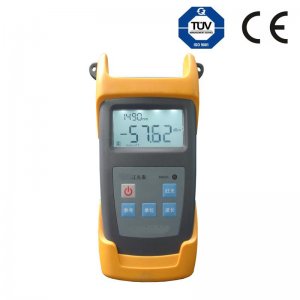The Differences Between OTDR & Optical Power Meter
When
testing for fiber optic cable, there are two tools commonly used: OTDR &
power meter. What might be surprising is that they can yield completely
different results. While an optical power meter tests the received optical
power, an optical time-domain reflectometer (OTDR) provides length and loss by
utilizing backscatter reflection.
Why
does that make such a difference? With a power meter, you’ll know if the fiber
is cut or damaged along the way because you’ll note a level of wastage. With
OTDR, you’ll know the distance to the break or if it made it to the test point
desired. The downside is that if the level of wastage is needed, OTDR is not as
accurate as a power meter. Another benefit of a power meter is that OTDRs can
sometimes miss a source of signal loss, such as a fiber misalignment. You’ll also
get different readings between an OTDR &
power meter if there is a launch cable present.
Both
an OTDR & power meter have their advantages and purposes, so most fiber
optic companies will have both on hand when testing fiber optic cables. Some
choose to use a power meter when a reliable, repeatable, and accurate test for
overall loss is needed. OTDRs are excellent for finding faults and verifying
splices and connections.
At
fiber-mart.com, our experience in fiber optics slicing and testing puts us in
the position of knowing which to use for a specific situation. We use both OTDR
& power meter equipment to ensure that your fiber optic project is a huge
success. Reach out to us today to learn more about our services.

评论
发表评论